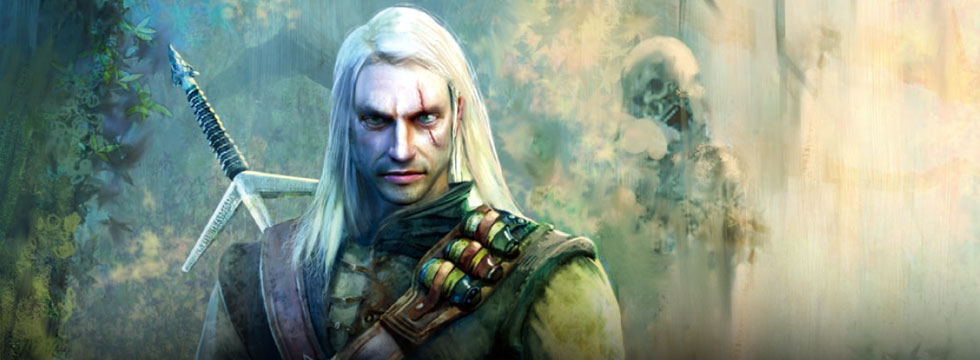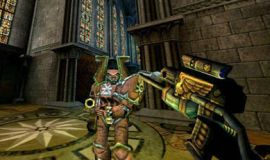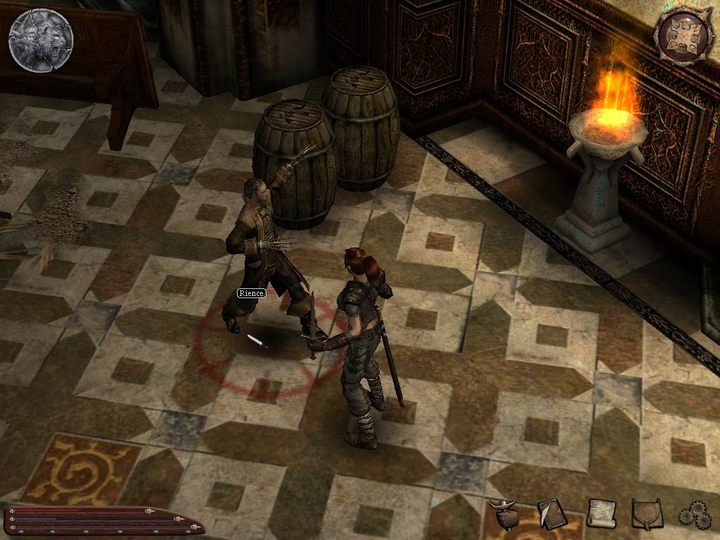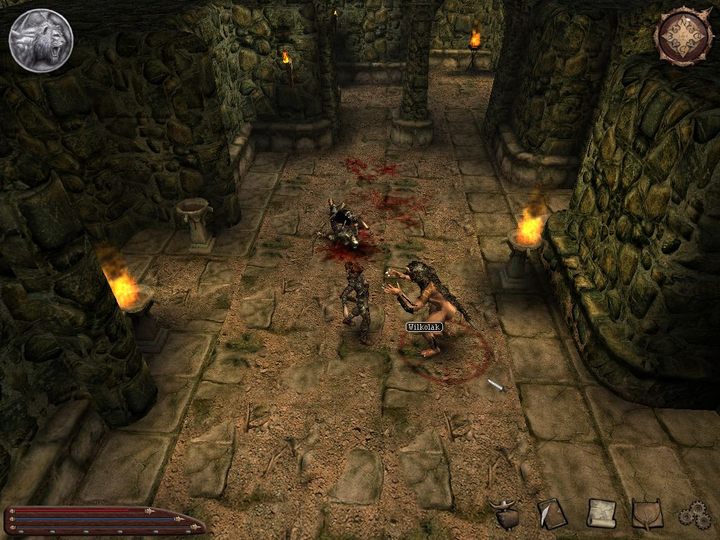The Witcher as Diablo-clone? Hands-on with 2003 prototype of the first Witcher game
Here’s a chance we don’t get often. Thanks to Sebastian Zielinski we played the 15-year-old demo of The Witcher game by CD Projekt RED that… had nothing in common with the RPG title eventually released in 2007. Would this game become a hit as well?

That’s right, folks, here’s yet another article about the history of The Witcher series. Today’s menu, however, is different. We go back 15 years, to the very beginnings of CD Projekt RED – and no, it’s not about some long-forgotten interviews or dusty old discoveries from the ancient depths of the Internet. Today, we are dealing with living history. Courtesy of Sebastian Zielinski, former head of CDPR, we were given a playable demo version of the first Witcher game, created shortly after the dev team was conceived, but long before it became the biggest Polish game developer, and one of the most notable ones in the world.
And once again, no, this is not the same build our fellow editors from the Polish website tvgry.pl presented some time ago along with Ryszard “Ryslaw” Chojnowski (you can watch it here in Polish). What we got our hands on is the 2003 version. What’s so different about it compared to the title that hit the shelves four years later? Almost everything. And did it also have the potential to become a worldwide hit? Well, about that…
CD Projekt enters the Dark Alliance
But before I explain why the proto-Witcher would have had trouble conquering the world, I must give you some historical background of the production. As you may already know, in the beginning of their operation, CD Projekt focused on importing games from western publishers, and localizing and distributing them in Poland. These were the guys behind the now iconic Polish translations of such classics as Baldur’s Gate or Planescape: Torment in the late 1990s. But in the end, with the coming of a new century, the Polish publishing market became an uncertain place to earn one’s daily bread and the company started looking for other ways to expand.
One such new opportunity was presented to CD Projekt by one of the most influential players on the Western market, Interplay, then led (not much longer as it turned out) by Brian Fargo and famous for having released many outstanding RPGs. At that time, the company was focusing all its efforts on Baldur’s Gate: Dark Alliance – a hack’n’slash set in the universe of the iconic isometric RPG series under the same title. CD Projekt was very eager to get the game published in Poland, but also voiced its disappointment with the fact that the game was developed exclusively for consoles (PlayStation 2, later also for Xbox and GameCume). Seeing the Poles’ wasted enthusiasm, Interplay suggested that the Polish company could develop a PC port on their own. And that’s how CD Projekt RED was born.

As you may easily check, for example by browsing our Games Encyclopedia, the PC edition of the first Dark Alliance never came to be. In fact, by the beginning of the 21st century Interplay was already on its last legs, and it soon became clear as day to the REDs that doing anything worthwhile for this publisher was pointless. Before that happened, though, a small fragment of the game had already been made – and the comapny felt that it would be a waste to pour several-months worth of work down the drain. A straw to clutch at came in the form of a certain popular fantasy writer (yes, I’m talking about Andrzej Sapkowski) who happened to live in Lodz, the same city the studio used to operate at the time, and who was willing to sell them the rights to adapt a certain popular book series about a white-haired monster slayer.
Having made sure that Metropolis Software wasn’t getting anyhere with their own Witcher (the studio led by Adrian Chmielarz and Grzegorz Miechowski wanted to adapt the books ever since 1997) and having transfered the equivalent of roughly $4,000 to Sapkowski’s bank account, CD Projekt RED managed to secure its further existence. The PC port of Baldur’s Gate: Dark Alliance was suddenly renamed The Witcher. The team, led by Zielinski at the time, was able to resume work, and several months later – in 2002 – they presented a working demo, which was taken on a tour around Europe in hopes of tempting some significant publisher to enter a cooperation. And that’s the demo we’ve got our hands on – or rather its newer, slightly modified build to be precise (although still an alpha).

When the witcher hacked and slashed
Well then, how does it feel to play a 15-year-old Witcher game? Comparing screenshots from both titles and noticing many similarities in things like camera work or visuals, one could fall under the wrong impression that this ancient Witcher was – just like Baldur’s Gate: Dark Alliance – a dynamic arcade game. Nothing of that sort. The Polish developer refrained from simply translating gamepad controls to keyboard + mouse combo, discarding manual attacks or jumps from the mechanics. Instead, the character was controlled just like in the original Baldur’s Gate – both movement and combat were reduced to executing single left mouse button clicks and observing the effects. To introduce some variety, we could also use the right mouse button to cast a magic sign (the only one featured in the demo was an overpowered Igni). At least that’s how it looks in the demo we tested.
The visuals also give off a false impression of connecting the proto-Witcher with its Baldur origins. Interplay wasn’t kind enough to share with the REDs either the game engine or any kind of developer tools used by Snowblind, the creators of Dark Alliance. The Poles had to resort to Calaris IC, a technology created by Sebastian Zielinski for the shooter game Mortyr. It enabled them to render rather impressive visuals – at least for 2003 – including such bells and whistles as volumetric light rays, trees shaking in the wind, or waves forming around a character wading through water (the last effect was taken straight from BG:DA though). The future was to show that it was this advanced game engine that would become the final nail to the coffin of the would-be first Witcher... But let’s not get ahead of facts; we’ll get back to this in a moment.

Despite its unsual, hardly engaging controls, in almost every other aspect The Witcher from 15 years ago looked like a model representative of the hack’n’slash genre – or, if your prefer, a typical action RPG. The gameplay focused on combat. The locations were linear (though sometimes offering several alternative paths to follow), and the protagonist moved from point A to point B while killing dozens of bandits and monsters. What needs to be noted here is the fact that it had negligible character progression mechanics – the demo includes a scarce few character stats, the equipment is rudimentary, and character skills or atributes to increase are nowhere to be found.

Even the main menu of the demo reveals interesting information – such as the multiplayer option. According to Sebastian Zielinski, it’s a relic from a previous game developed using Calaris IC, before it was adapted to run The Witcher. That game was Warhammer 40,000: Agents of Death from Mirage – an FPS dedicated to multiplayer matches. What’s interesting, the project was completed but it never hit the stores.
Well, maybe that’s because it’s an alpha? When asked about it, Sebastian Zielinski didn’t give us a clear answer, but pointed out that the devs wanted to prepare several different witcher characters and have the player switch between them throughout the game (from time to time Geralt of Rivia himself was to appear, mostly as a companion). That’s an interesting piece of information if you take into account the fact that a few years back, when commenting on the 2002 Witcher demo, “Ryslaw” mentioned creating a character at the beginning of the game. Perhaps a character creator doesn’t completely rule out an occasional change of protagonist? Either way, the differences between the playable witchers would probably have boiled down to the different equipment they used. The inventory list that we found in the demo includes such items as dagger, bastard sword, saber, or even fists and crossbow.

Every road leads home to Kaer Morhen
Unfortunately, the demo offers little more than a walk through a few locations and a series of skirmishes. It lacks any kind of narrative layer – cut-scenes, or even dialogues with random NPCs (which is somewhat peculiar as the earlier version of the game presented by “Ryslaw” included such mechanics). This doesn’t mean, however, that the plot of the proto-Witcher remains a secret. Thanks to Zelinski and other members of the original CDPR team we know quite a lot about the story – and we can assume that the complexity of the narrative in The Witcher would have stood out greatly against other hack’n’slash games of that time.
The beginning sounds familiar. We have a group of bandits storming Kaer Morhen, the lair of the witchers, and stealing their secrets. In addition to common thugs, a certain powerful wizard also takes part in the attack. So, is it the same story we ultimately saw in the 2007 Witcher? Not quite. The assailants are the knights of the Order of the Flaming Rose (without the smokescreen of some shoddy middleman like the Salamandra), and the wizard leading the attack is not Azar Javed but Rience – a character known to those who have read the books. Canonically killed off by Ciri, in the game he returns from the dead to (probably) take revenge on her masters for the eight fingers she took from him in a certain ice skating incident.

Further development of the story strays more and more from what we saw in the final version of the 2007 Witcher. First of all, the main character was not Geralt, but his witcher-trained surprise child, other than Ciri – a ”son” who despises his “father” for giving more attention to his “daughter”. This young monster slayer – created, as we already said, by the player at the outset of the adventure – would first head for Vizima to help out Vesemir, poisoned by a beast known as priskirnik, and then follow Rience through the entire continent. The chase would lead him to castle Stone (Polish name: Kamien), in which the wizard would await the young witcher, surrounded by the ranks of temple knights and holding Dandelion hostage. The grand finale, however, would take place in the Rinde monastery, stormed by the protagonist alongside fellow witchers.

That the story of the proto-Witcher would be the game’s asset is also suggested by the names of the script writers – it was written by Maciej Jurewicz and Jacek Komuda. Both gentlemen had previously cooperated on a historical RPG system, well-known in some fanbase circles, entitled The Wild Fields (Polish title: Dzikie Pola), and while the former has stepped down from literary work, Jacek Komuda remains an author famous in Poland, mostly for historical novels.

What could go wrong?
The blessing from Poland’s most famous fantasy writer, an experienced team, and an advanced technology to create tempting visuals – judging from the announcements and screenshots, the proto-Witcher may have been considered a promising hit for a reason. As you already know, however, it didn’t become one – in fact, it didn’t become anything at all. The game under the same title, which ultimately hit the shelves in 2007, had almost nothing in common with the first version – the team had changed, the engine, the plot outline, and even the genre. The final version of The Witcher inherited nothing more than a few themes borrowed from the original script by Komuda and Jurewicz.
But why did the efforts of Zielinski’s team bring nothing in the end? There are two versions of the story. Zielinski himself appears to be bitter about the decision of CD Projekt’s management – sudden and incomprehensible in his oppinion – to scrap the project. He believes that the choice they made was arbitrary and unfair, and wasn’t discussed with the developers. To bolster his statement, he refers to the positive reception of the demo throughout the world – Intel was delighted, and there were almost no critical comments from the publishers that had seen the game.

The already mentioned Ryszard “Ryslaw” Chojnowski recalls a different version of the events. He jointed the RED team at a bit later stage of production, and his task was to revise the state of works implemented to date. His opinion wasn’t favorable, as “Ryslaw” thought that the team had no coherent vision of the game. According to him, everyone tried to drag the project in a different direction and implement their own ideas. Another problematic thing he noticed was the Calaris IC engine, which was great for an FPS, sure, but proved to be quite troublesome for an action RPG game. Then there was the matter of the tiny budget and sluggish pace of production.
So what really went down? Well, this version of The Witcher did have the potential to become a decent game. Perhaps the folks at RED studio would have eventually delivered a pretty, quite playable hack’n’slash with an interesting plot, one we could proudly present in the West. But it seems that the demo they used to lure bigger partners didn’t make it easy to believe in this vision. While it was pleasing for the eye, playing it wasn’t exactly enjoyable, all due to rudimentary mechanics, boring combat system, clunky and unresponsive controls, and other bugs. Of course, it wasn’t a publicly accessible demo, but still, it’s hardly a surprise that the publishers didn’t fall over themselves to support CD Projekt’s precarious project.

The Witcher is dead, long live the Witcher!
The story of how the first Witcher came to be was full of ups and downs, and continued to be a tedious process, but at some point it gained a more specific direction. CD Projekt RED scrapped whatever they had made so far, and moved to Warsaw, where the studio got a much-needed injection of fresh blood, including a new project lead. As for Sebastian Zielinski, he parted ways with CDP on non-friendly terms. A decicion was made to create a fullblooded RPG, and the Calaris IS technology was replaced by the Aurora engine from Neverwinter Nights, which was suggested to the Polish devs by BioWare. Some time later, they made a crucial change in the script, making Geralt of Rivia the main protagonist of the game. And this is how the course was set for CD Projekt RED’s game, which finally materialized in 2007 as the first Witcher.
While the game didn’t gain millions of fans right off the bat, it met with sufficient praise from critics and gamers alike to enable making a sequel. And then another one. And then 2015 came, and The Witcher 3: Wild Hunt became a worldwide phenomenon, role model for the entire gaming industry, and winner of multiple awards. And to think that this entire series of events started only 15 years prior, when the management of an unassuming Polish studio called CD Projekt decided to scrap the demo of the first Witcher and start all over again. Perhaps we would have gotten a different thing altogether, but it seems there’s nothing to regret. After all, three games into the series, we got a beautiful, fascinating RPG that rocked the world and obliterated the competition. Plus, dethroning Diablo, the hack’n’slash emperor, could have proved to be kind of difficult.

